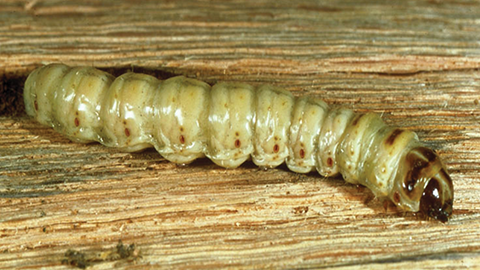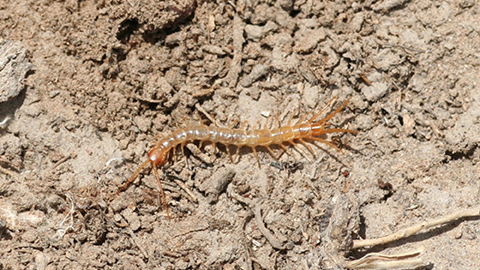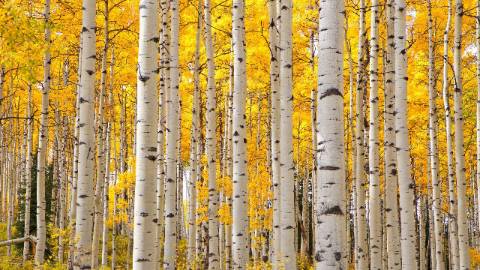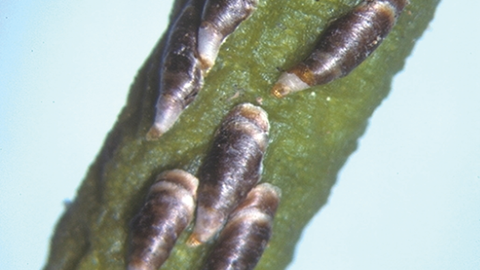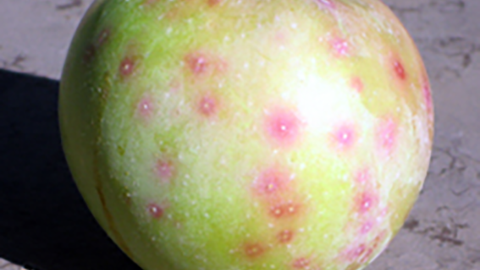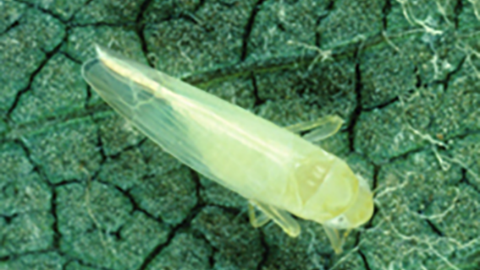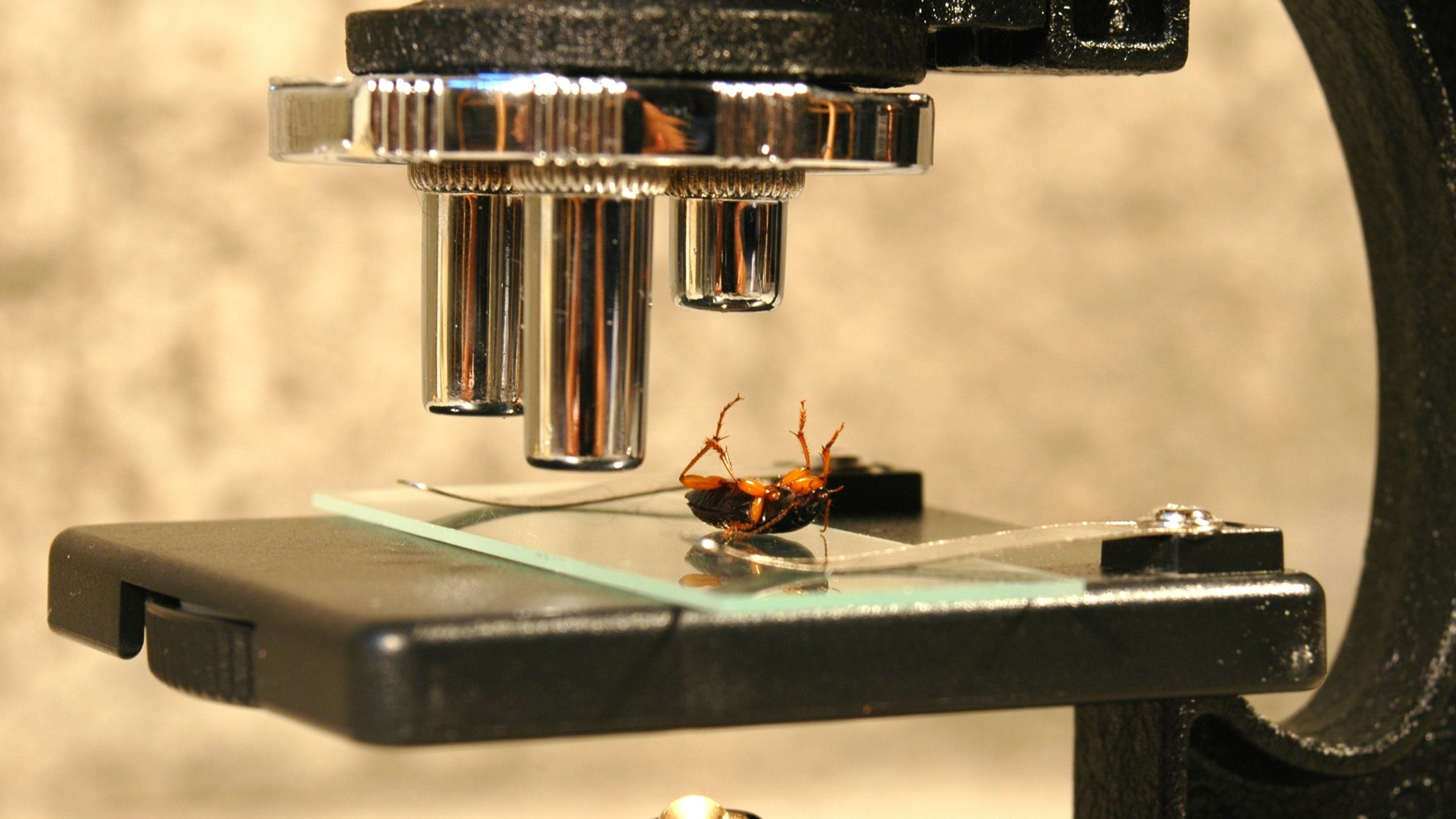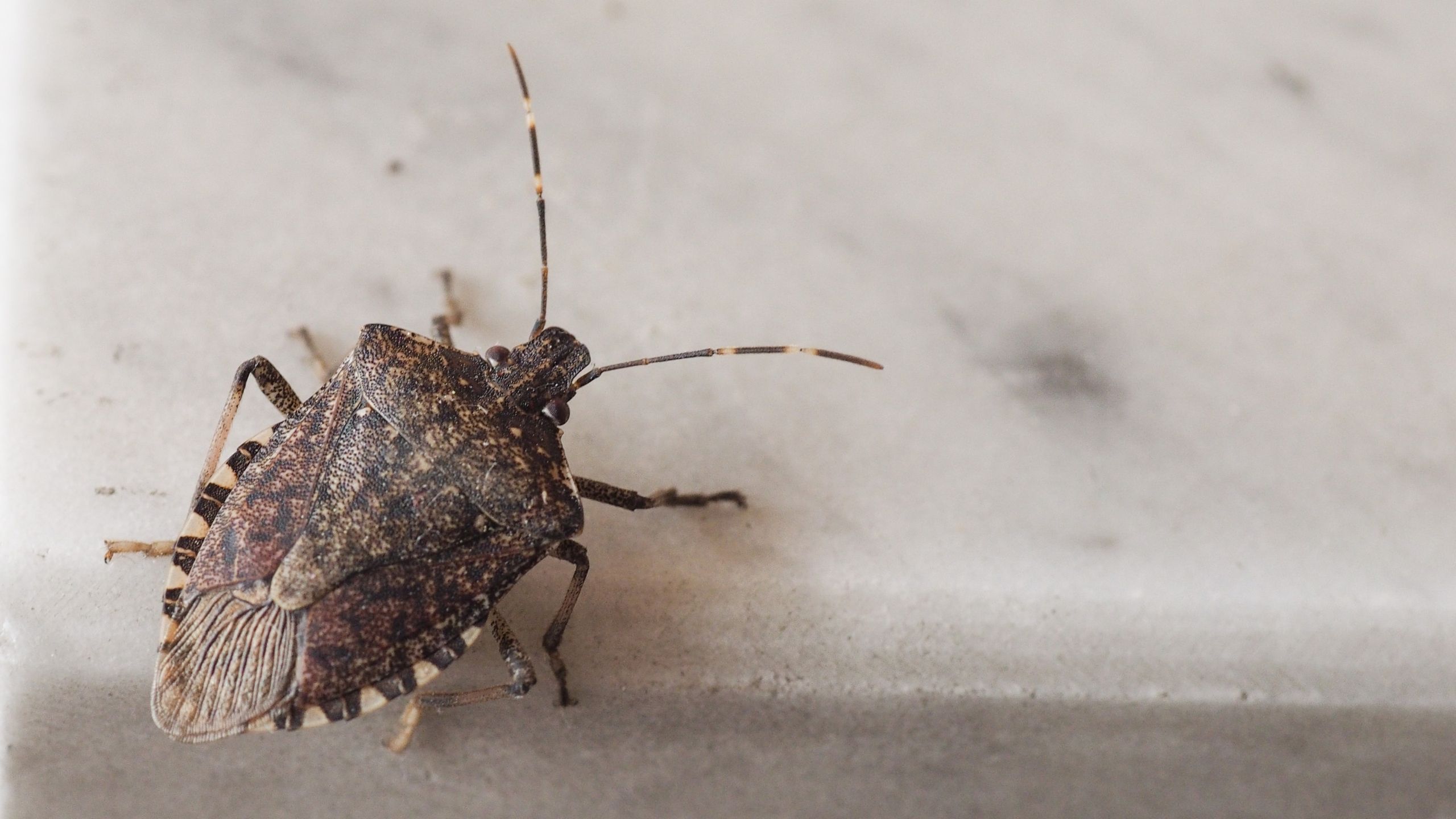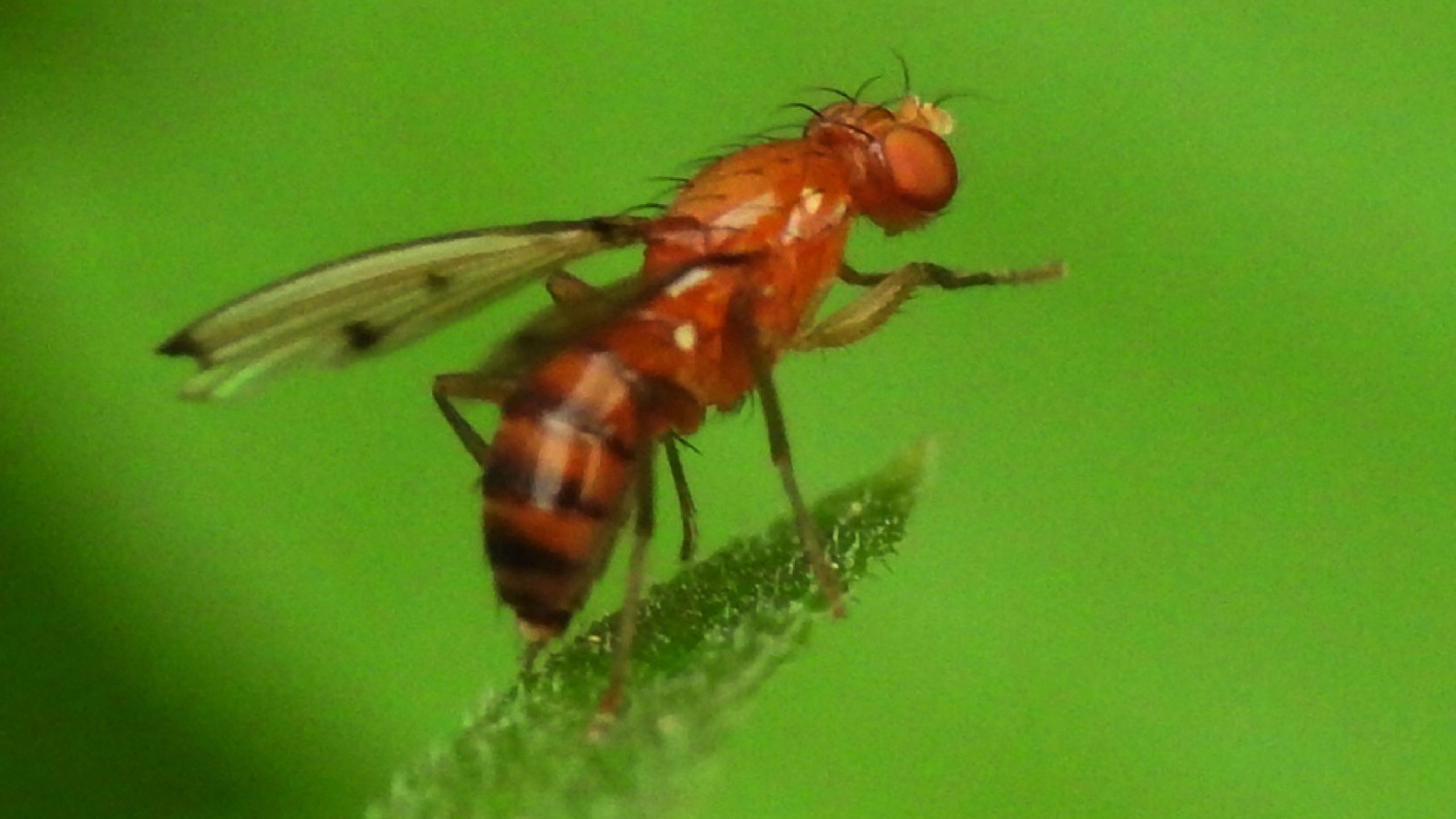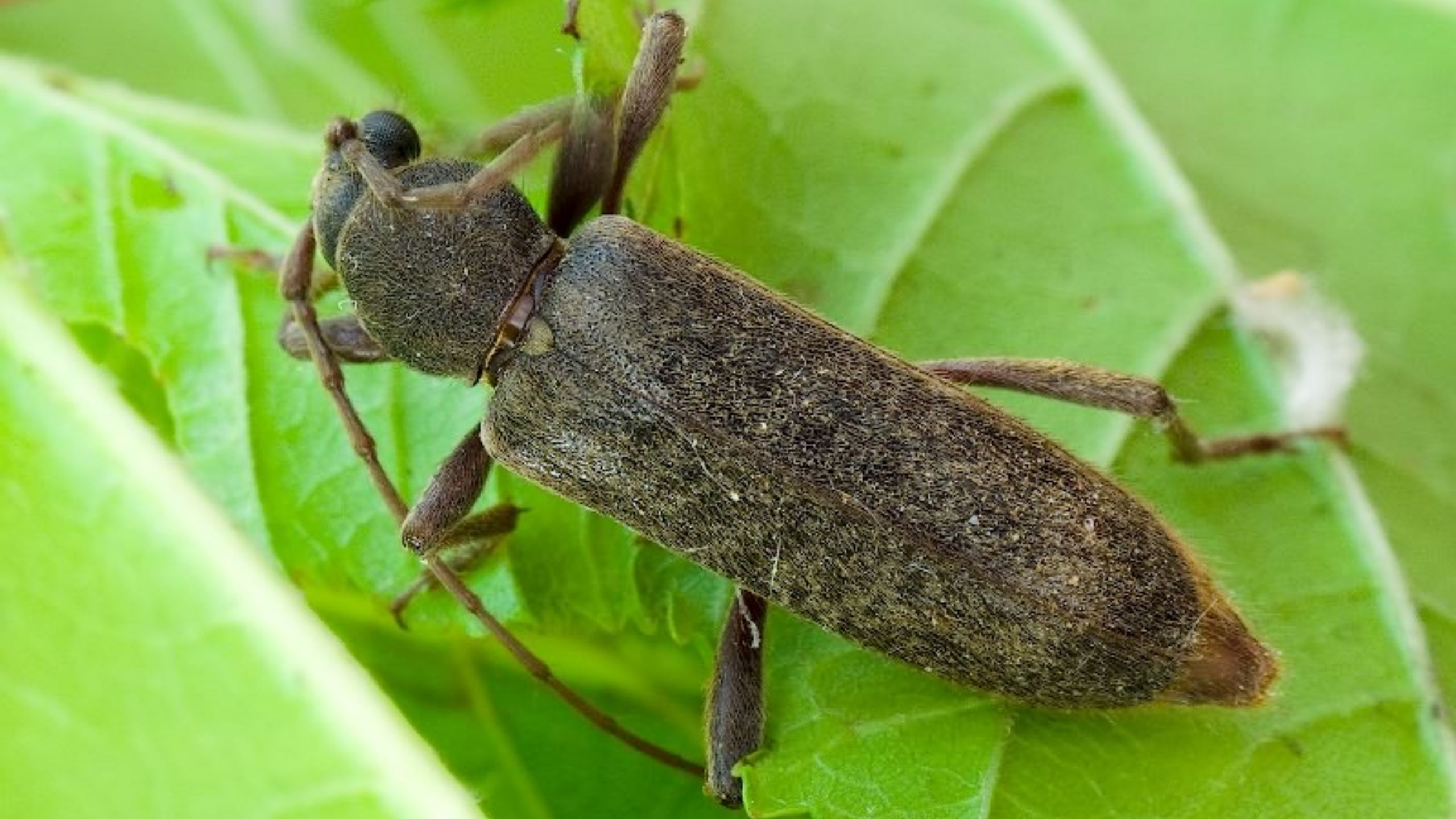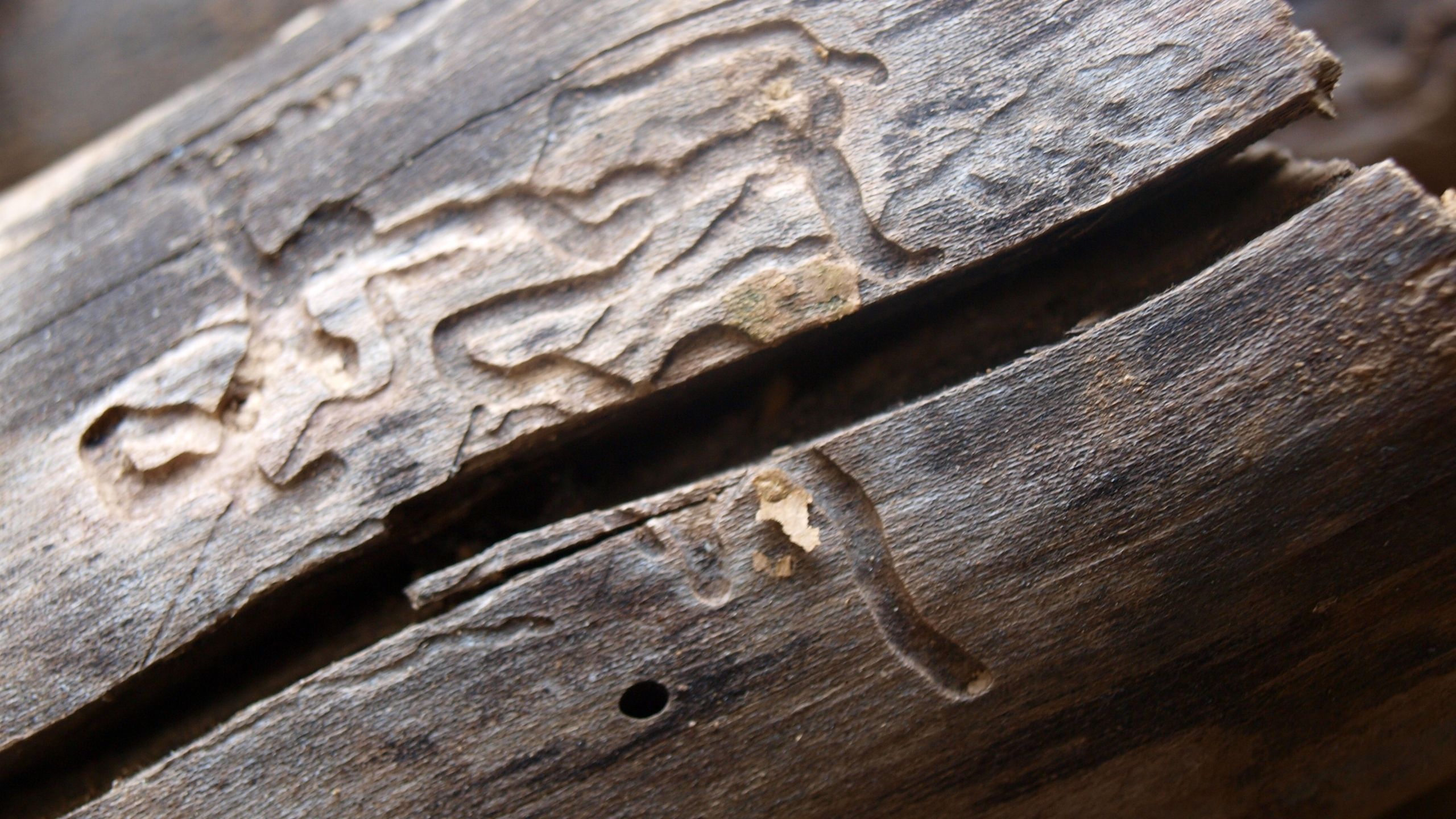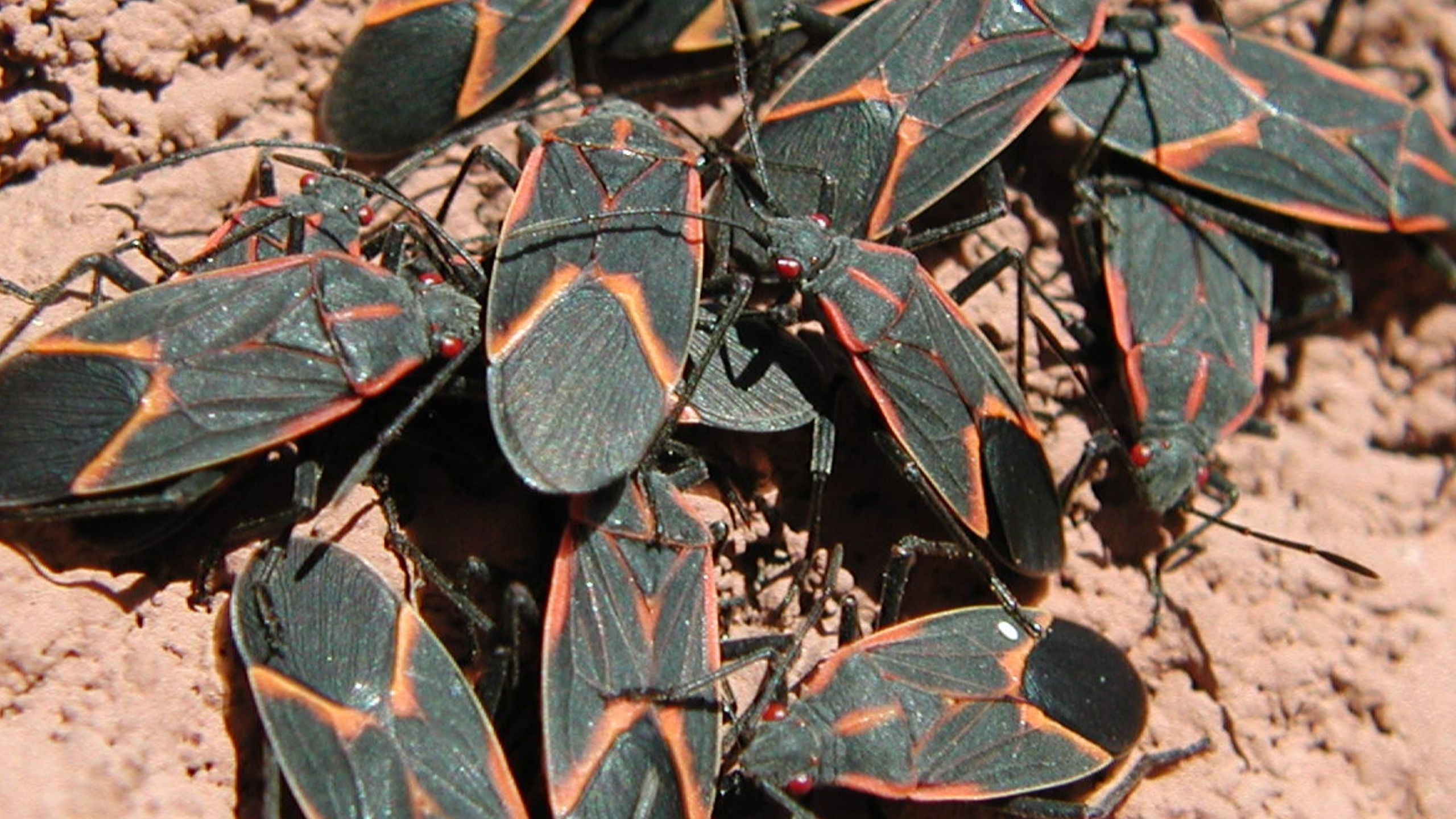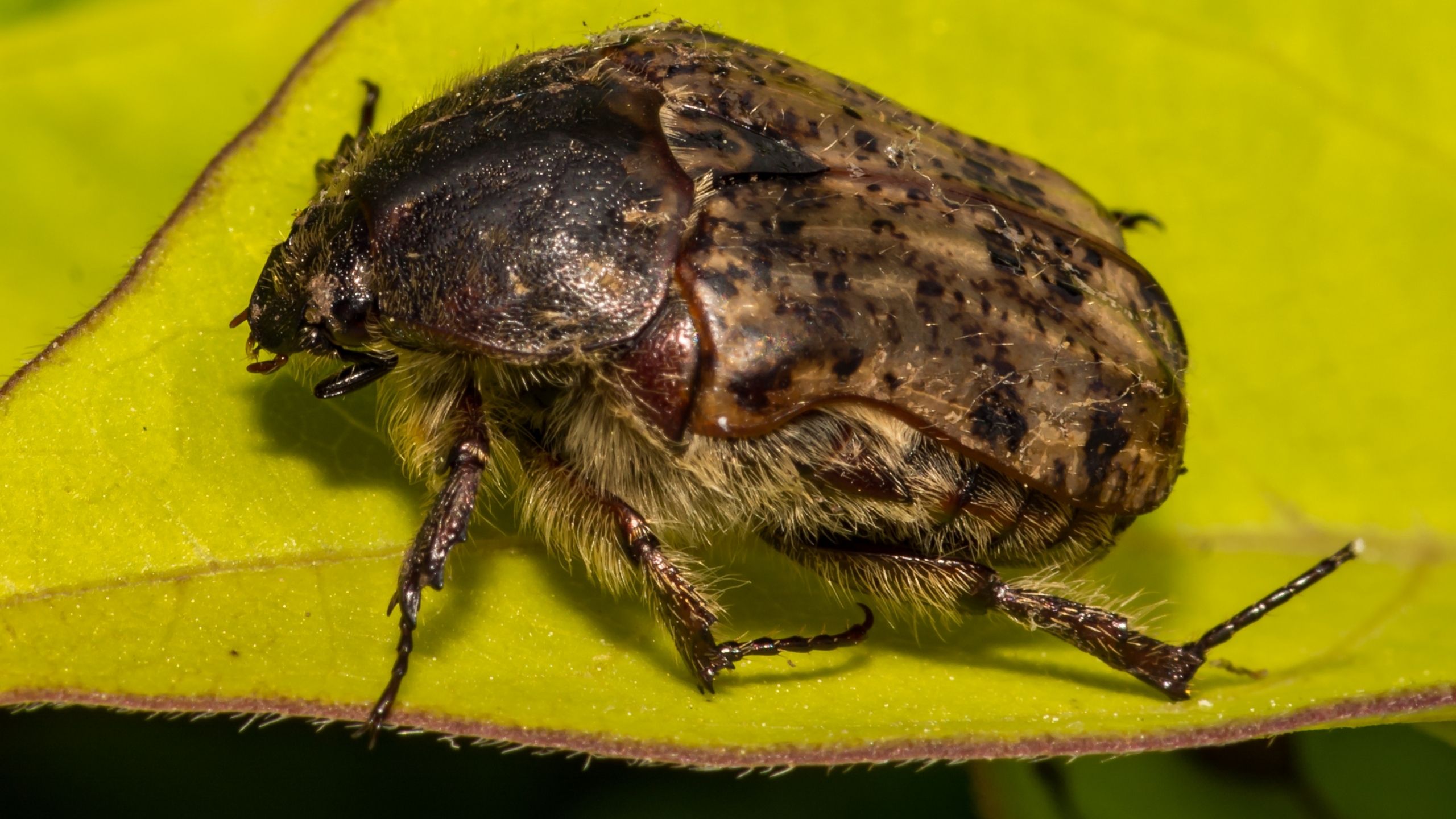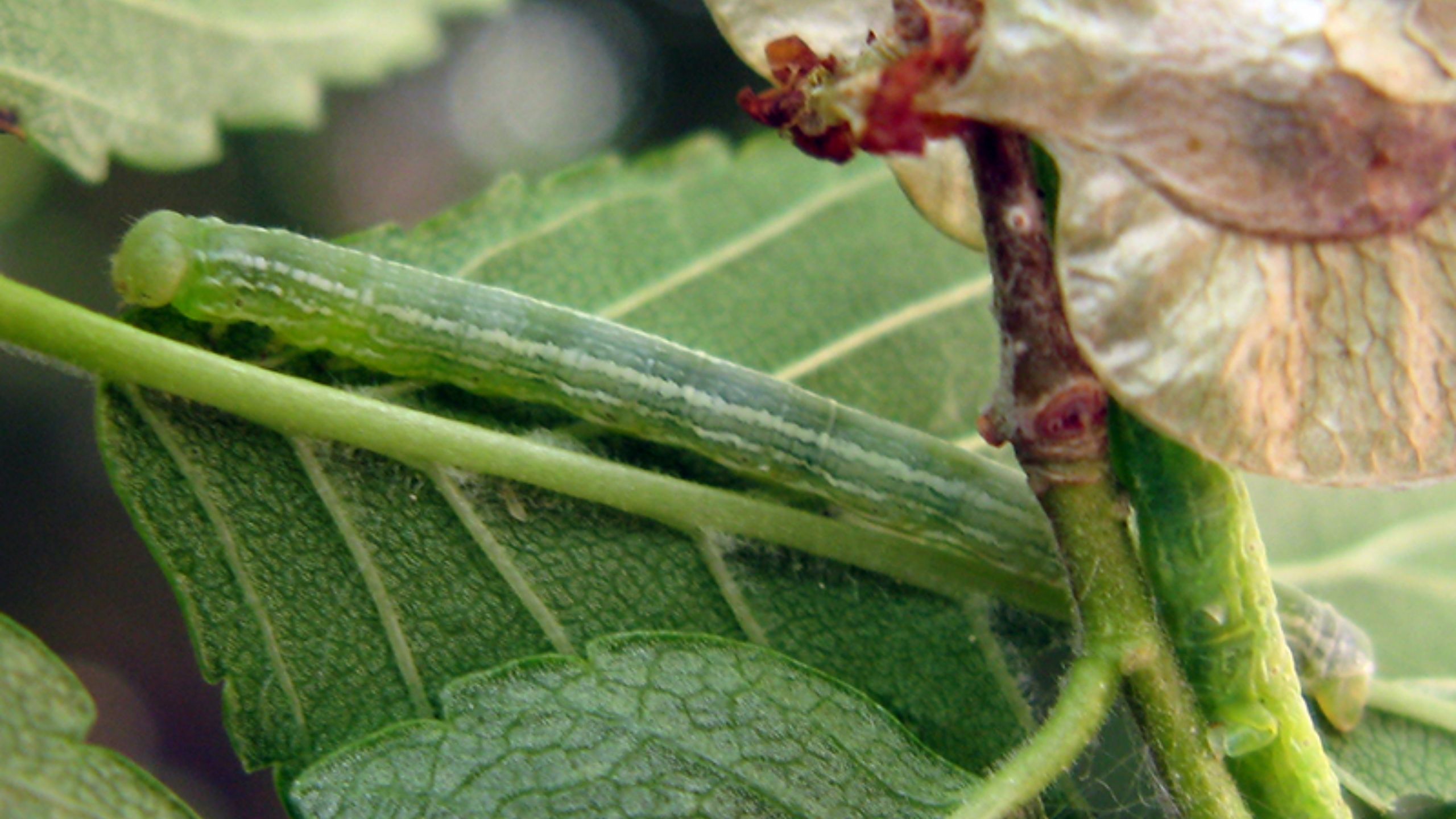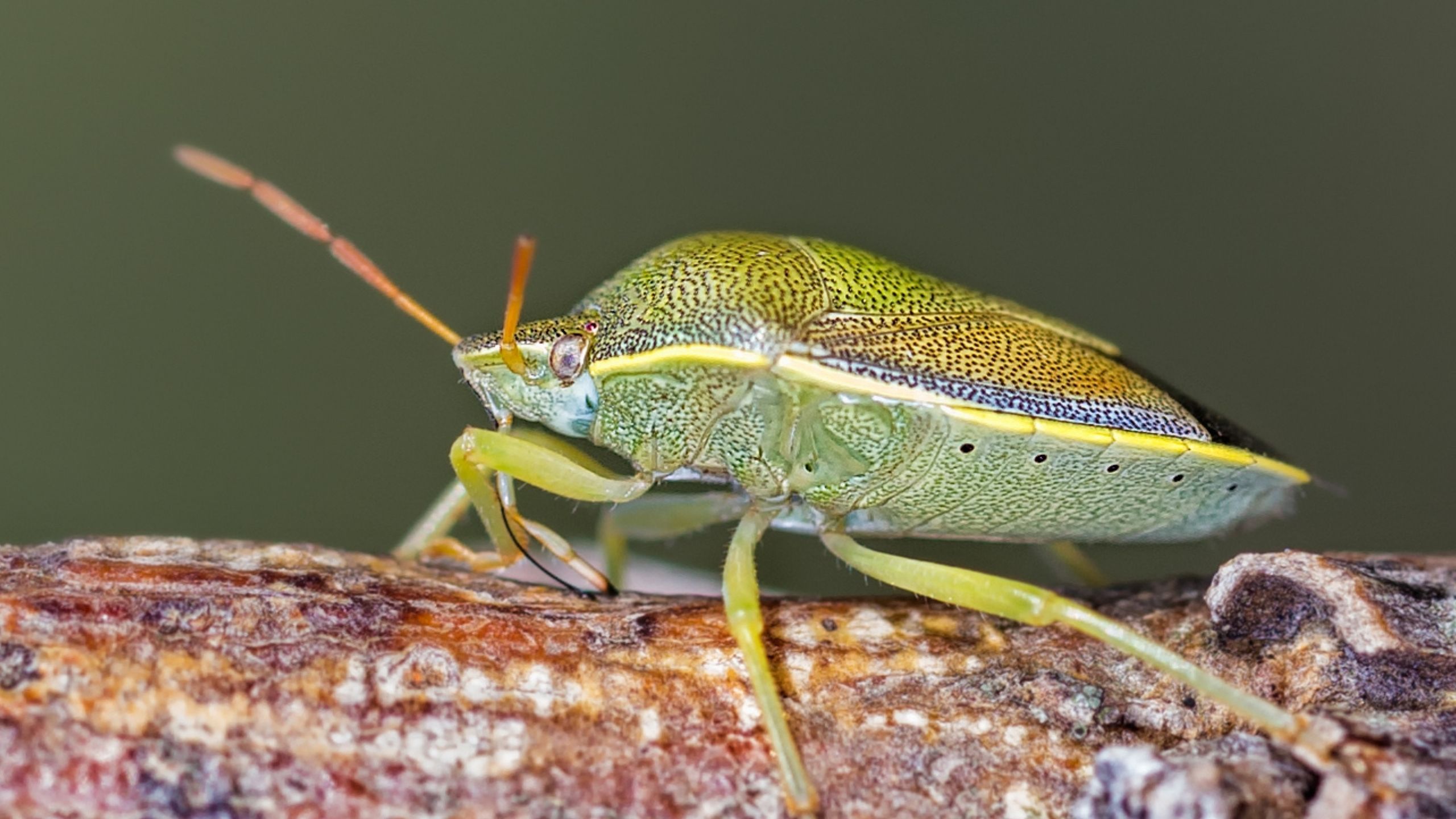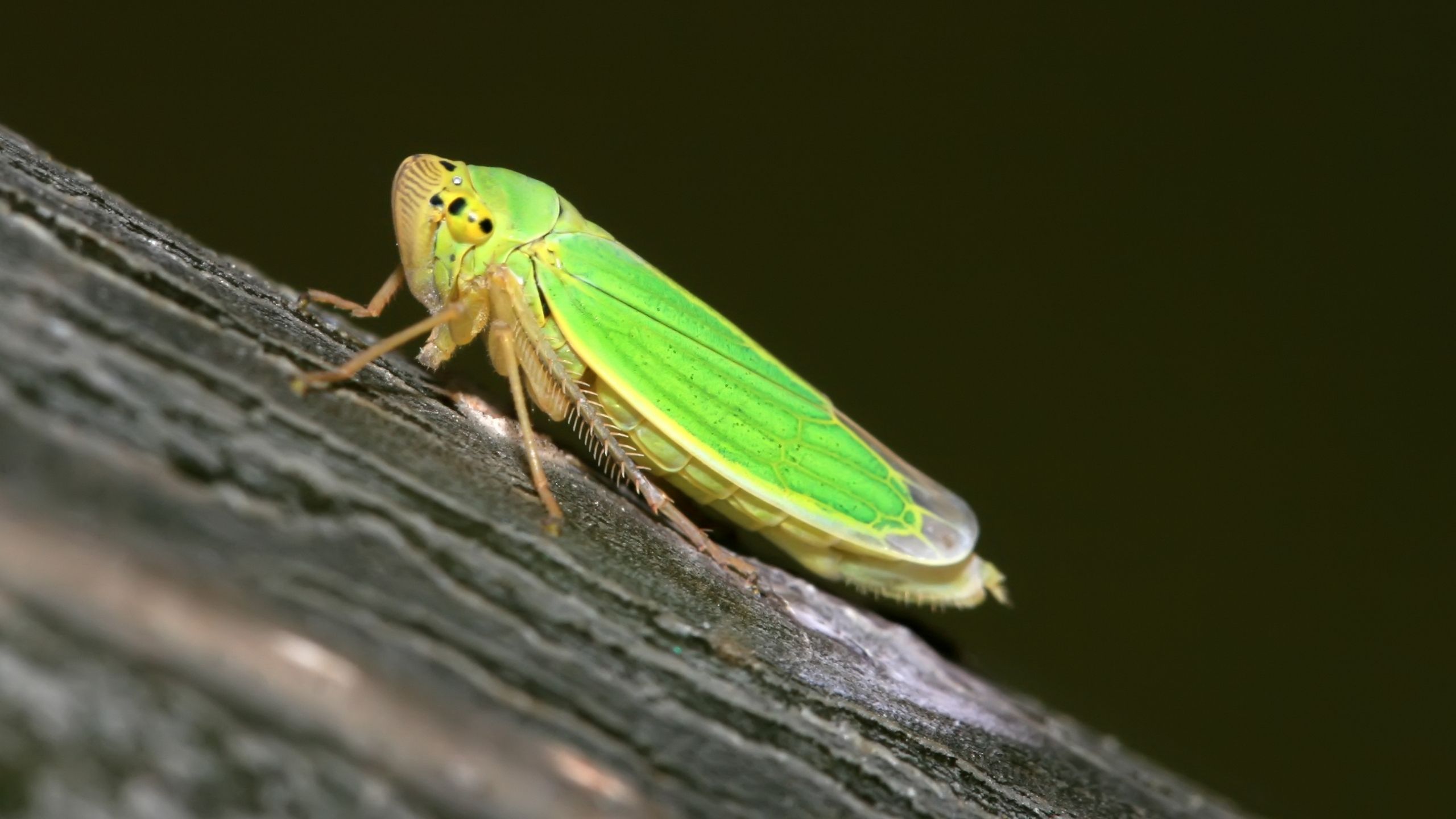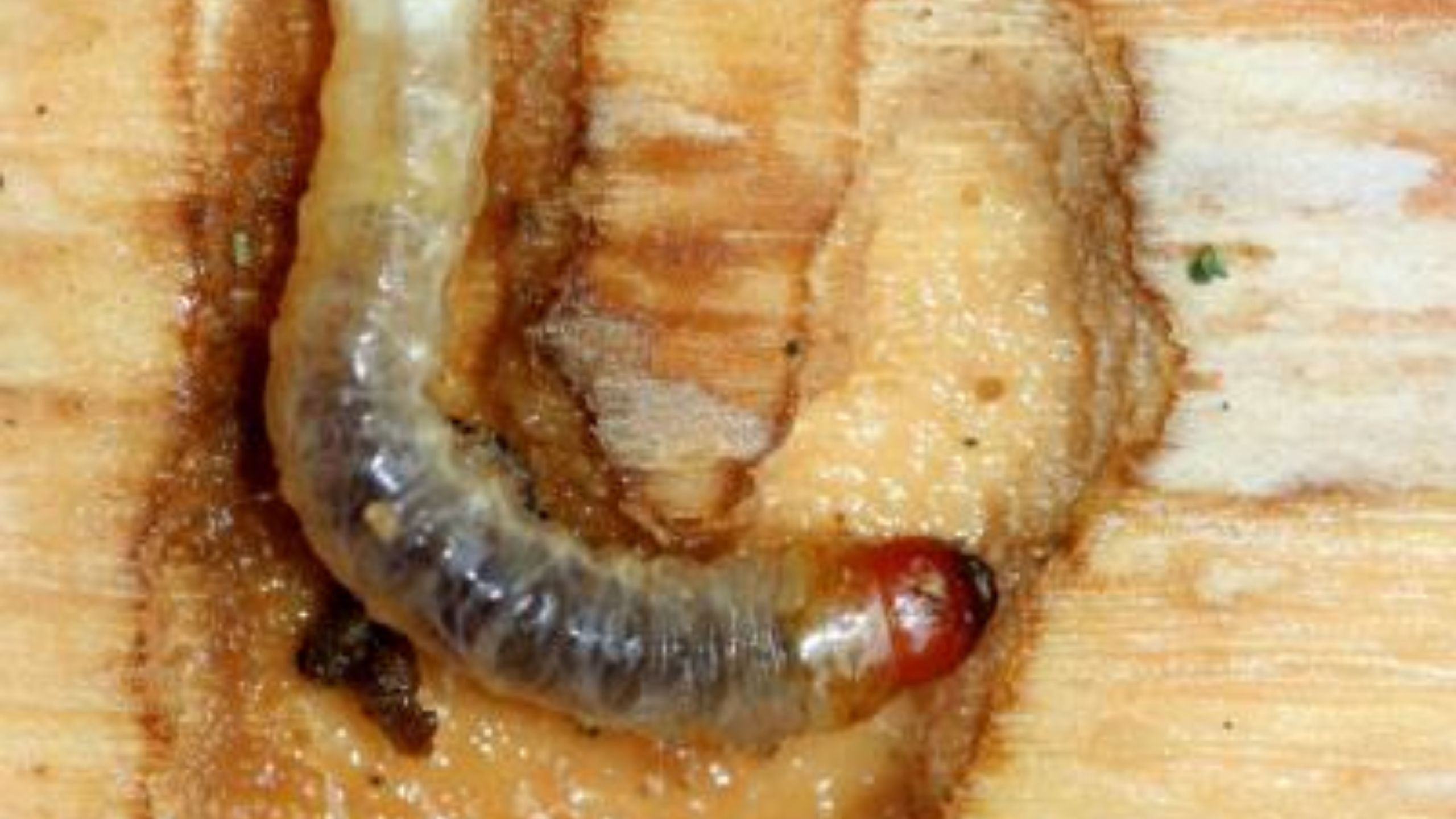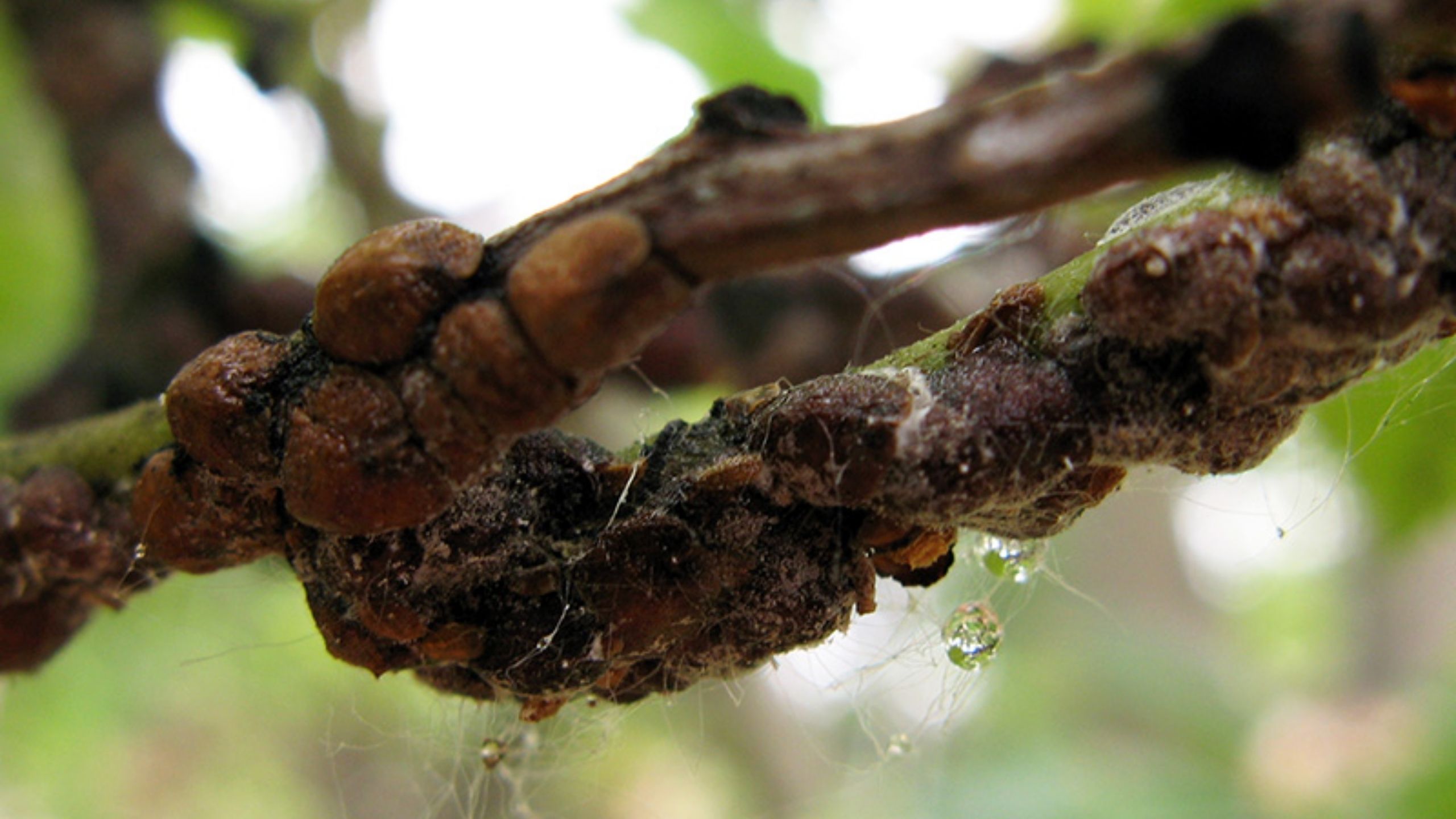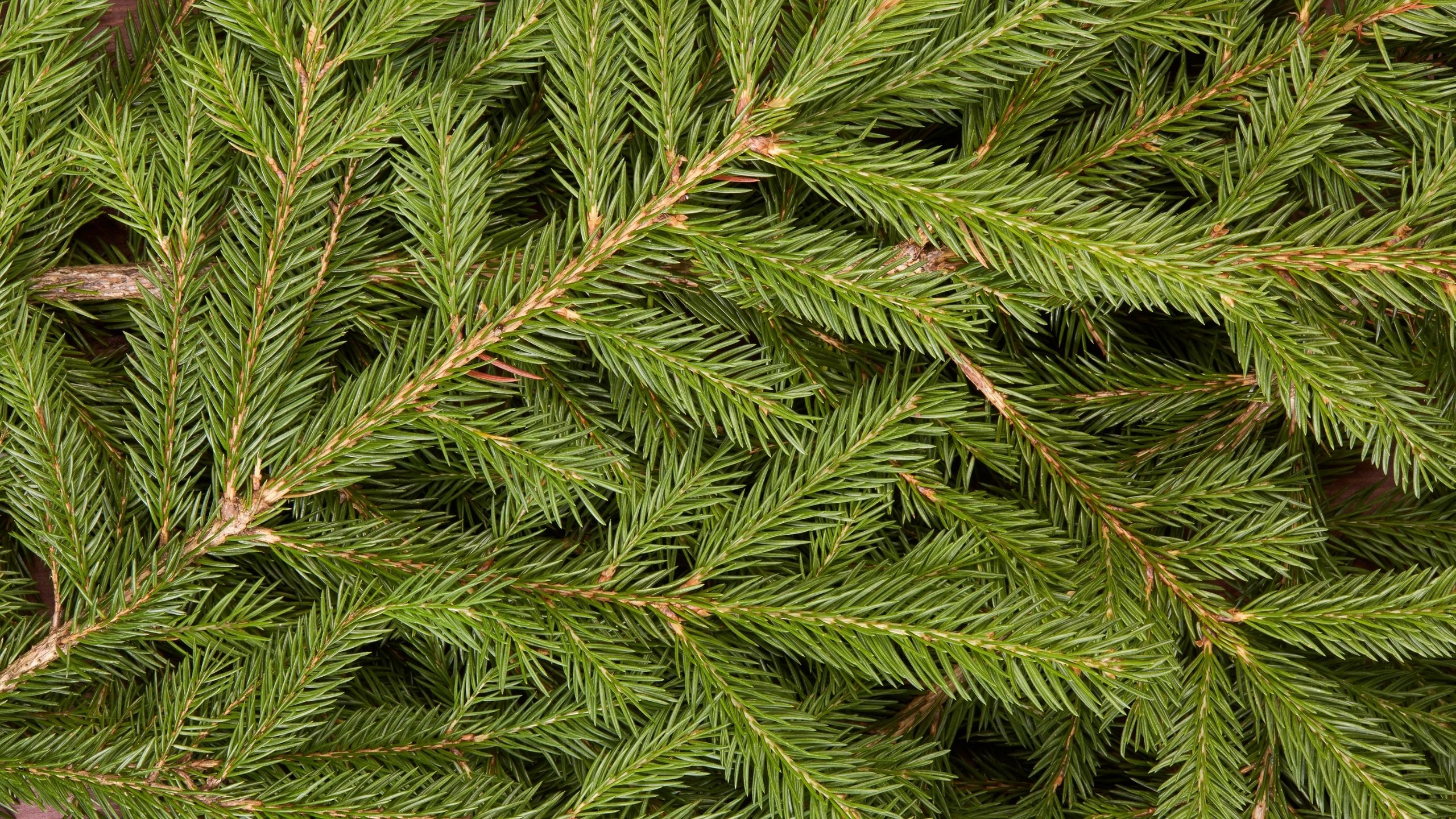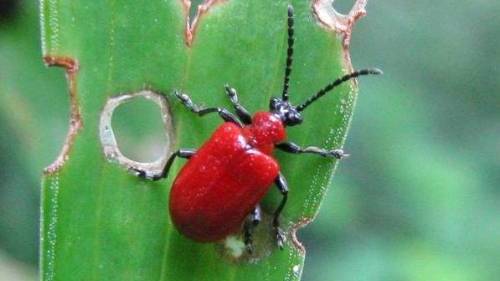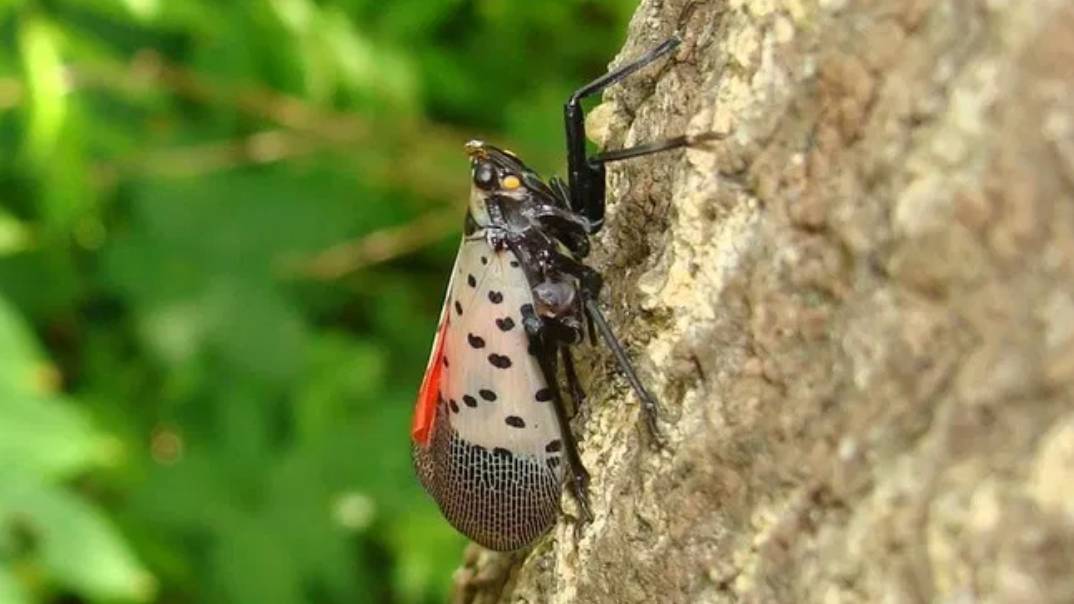Eriophyid Mites
Bud, blister, gall, and rust mites
September 2011
Ryan S. Davis, Arthropod Diagnostician (No longer at USU) • Taun Beddes, Cache County Horticulture Agent

Fig. 1. Citrus rust mite (Phyllocoptruta oleivora). Image courtesy of Texas A&M University.
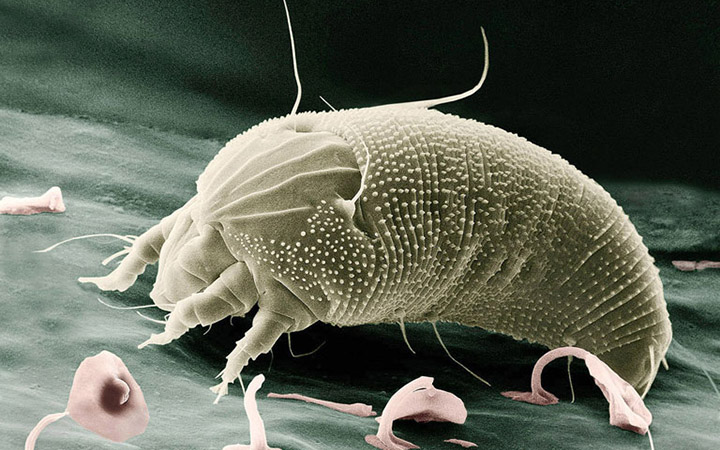
Fig. 2. Microscopic view of an eriophyid mite (Aceria anthocoptes). Image courtesy of Eric Erbe, USDA Agricultural Research Service, Bugwood.org.
QUICK FACTS
- Eriophyid mites cannot be seen without a 20x hand lens or greater magnification.
- Eriophyid mites seldom cause serious injury or stress to plants; damage is normally aesthetic.
- Damage from eriophyid mites usually consists of leaf galls, bud or flower galls, blisters, scabbing, and deformities of leaves, stems, buds, and flowers.
- Control techniques include pruning, plant removal, insecticidal soap, horticultural oils, predatory mites, and broad-spectrum insecticides and miticides.
INTRODUCTION
Eriophyid mites are translucent, cigar-shaped microscopic mites that cause deformities on many plants species. These mites are noticed when their feeding causes abnormalities of plant tissues such as erineum, galls, brooms, leaf curling, blisters, rusts, silvering, fruit rusetting, and deformed buds, catkins, fruits, etc. Fortunately, these mites rarely cause serious harm to plants, and control is seldom needed. In fact, eriophyid mites can serve as an alternative food source for predatory mites when their primary food source is absent. In that way, eriophyid mites can actually help reduce outbreaks of spider mites and other insects on which predatory spider mites feed, by allowing predatory mites to survive in the absence of their primary food. There are 1,859 species of eriophyid mites described from around the world with many species still undescribed. Needless to say, you are likely to encounter these mites some time in your gardening future.
GENERAL BIOLOGY
Family Name: Eriophyidae
Range: Worldwide
Hosts: Some mites are host specific, while others attack many plant, tree, and shrub species (Table 2).
Identification of Adult: Nearly invisible to the unaided eye (1/100” in length), cylindrical/cigar-shaped, tapering from head to rear, and translucent white (Fig. 1). Unlike most mites, eriophyids only have 4 legs located near the head.
Life History: Mites generally overwinter as fertilized adult females under bud scales, or protected sites on or near the host plant, and emerge at bud break in spring. Both males and females are present throughout the growing season. Reproduction is continuous, with generations completed every 2-3 weeks; overlapping generations are present.
Key Habits: Overwintering females emerge from under budscales and other protected sites to lay eggs and feed on new foliage when buds begin to break in the spring. This time is most adventitious for insecticide applications. Some may transmit viruses that can deform plants or cause economic losses to various crops.
Damage description:
Below are pictures of symptoms caused by eriophyid mites categorized by plant part.
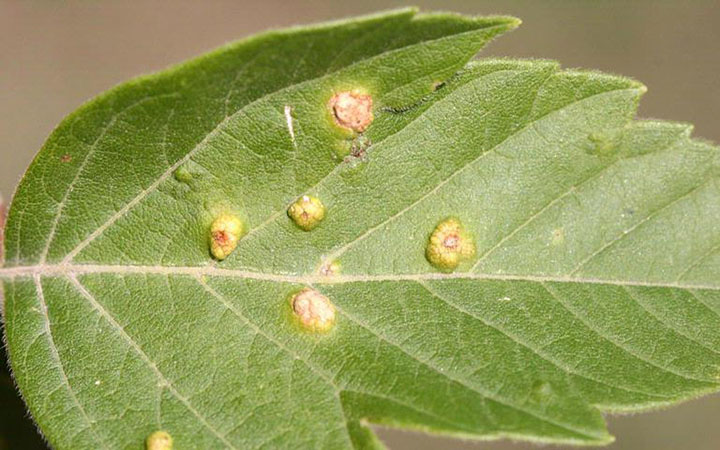
Fig. 3. Galls caused by boxelder pouchgall mite (Eriophyes
negundi). Image courtesy of Whitney Cranshaw,
Colorado State University, Bugwood.org.
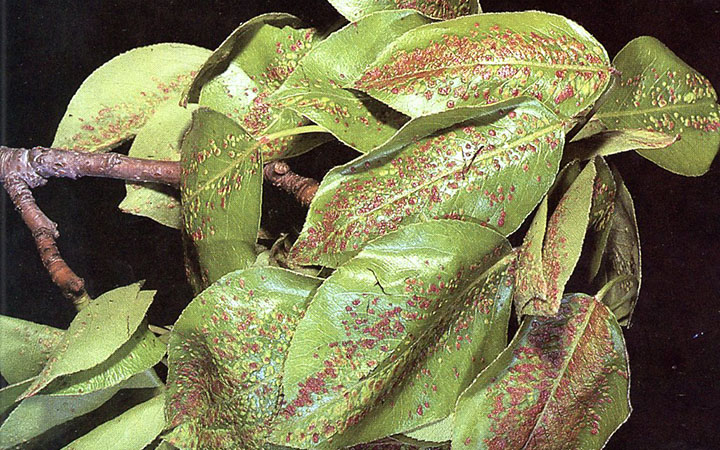
Fig. 4. Leaf blisters on pear caused by pearleaf blister mite
(Phytoptus pyri). Image courtesy of Keifer, H.H., Baker, E.W.,
Kono, T., Delfinado, M., and Styer, W.E. An Illustrated Guide
to Plant Abnormalities Caused by Eriophyid Mites.

Fig. 5. Erineum on Rocky Mountain Maple caused by Eriophyes
calaceris. Image courtesy of Ciesla, W.M. Forest Health
International. Bugwood.org.

Fig. 6. Fingergalls on chokecherry caused by Phytoptus
emarginate. Image courtesy of Keifer, H.H., Baker, E.W.,
Kono, T., Delfinado, M., and Styer, W.E. An Illustrated Guide
to Plant Abnormalities Caused by Eriophyid Mites.

Fig. 7. Bronzing of pear leaves caused by pear rust mite
(Epitrimerus pyri). Image courtesy of Clark, J.C. University of
California Statewide IPM Project.

Fig. 8. Russeting of pear fruit by pear rust mite (Epitrimerus pyri).
Image courtesy of Clark, J.C. University of California Statewide
IPM Project.

Fig. 9. Cottonwood catkin gall mite (Eriophyes newessegi). Image
courtesy of Whitney Cranshaw,
Colorado State University, Bugwood.org.
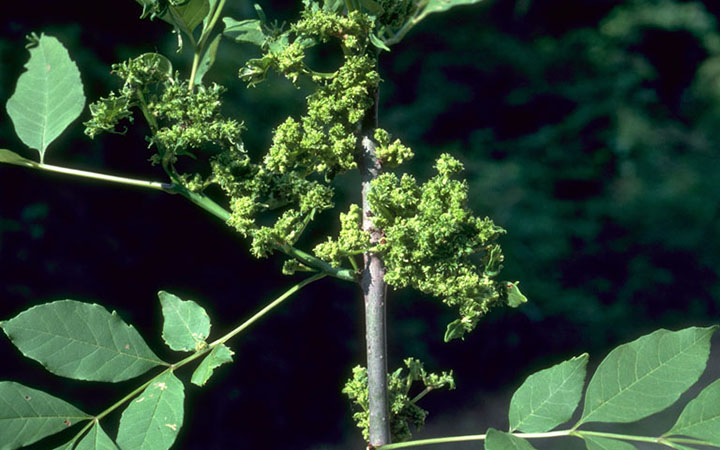
Fig. 10. Ash flower gall mite (Eriophyes fraxiniflora). Image
courtesy of Texas A&M University.
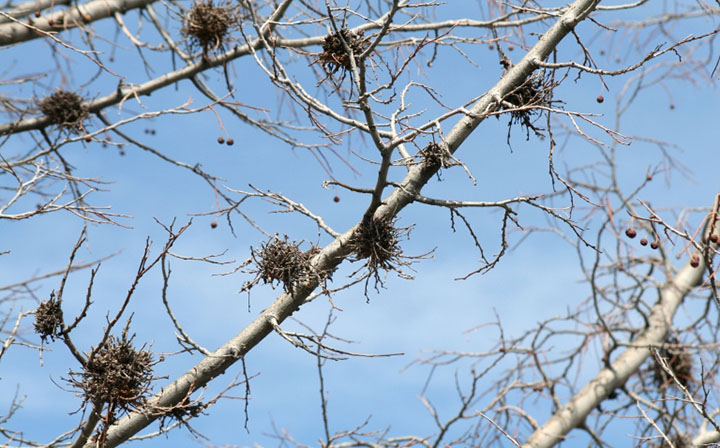
Fig. 11. Hackberry witches broom caused by Eriophyes celtis.
Image courtesy of Whitney Cranshaw,
Colorado State University, Bugwood.org.
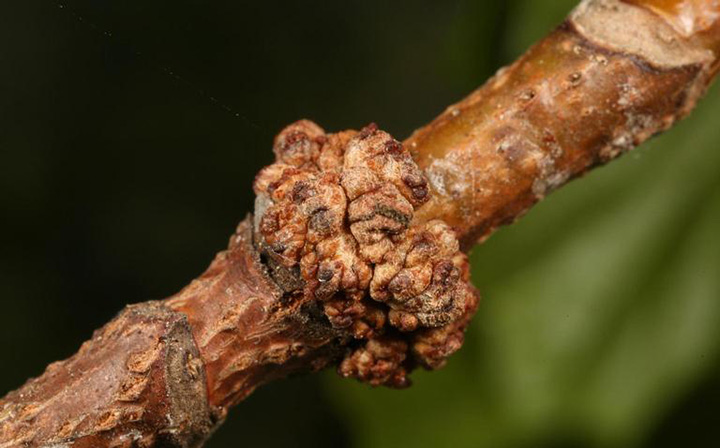
Fig. 12. Example of a stem gall mite (Aceria sp.) on maple. Image
courtesy of Csoka, G. Hungary Forest Research Institute.
Bugwood.org.

Fig. 13. Poplar bud gall caused by Eriophyes parapopuli. Image
courtesy of Whitney Cranshaw,
Colorado State University, Bugwood.org.

Fig. 14. Damage caused by rose rosette virus transmitted by
Phyllocoptes fructiphilus. Image courtesy of Keifer, H.H., Baker, E.W.,
Kono, T., Delfinado, M., and Styer, W.E. An Illustrated Guide
to Plant Abnormalities Caused by Eriophyid Mites.
CONTROL
Eriophyid mite damage occurs on many plant species and often does not impact long term health. Because of this, chemical pesticides should not be considered a primary management option.
Non-Chemical Control
Cultural control practices that modify the growing environment can reduce the occurrence of unwanted pests.
- Pesticide avoidance: Overuse of insecticides and miticides can eliminate natural predators, and can lead to pest resistance, making long-term control difficult.
- Monitor/scout: Periodic examination of plant material reveal Eriophyid populations before they increase to damaging numbers.
- Plant selection: Use plants that are less susceptible to eriophyid mites, and that are adapted to Utah’s arid climate; contact your local USU Extension office for recommendations. Make sure plants or planting material you select are free from eriophyid mites.
- Prune: Remove infested leaves or branches and remove from the property.
- Plant removal: Heavily infested plants such as tomatoes and wheat, may need to be removed to reduce the spread of mites. Some mites have secondary host plants, so removal of host weeds minimizes sources of re-infestation.
Chemical Control
If severe infestations are causing major aesthetic damage, tree stress, or crop economic loss, insecticides/miticides may be necessary. Consider reduced-risk pesticides to limit negative impacts on beneficial insects and the environment. Occasionally, broad-spectrum insecticides/miticides, or those that kill not only your target pest, but many other arthropods, may be necessary for quick reductions in mite numbers. The downside of broad-spectrum insecticides is that they can eliminate predators and lead to chemical resistance in eriophyid mites and other insect populations (if used improperly).
Reduced-Risk Chemicals
- Horticultural soaps and oils: Apply dormant weight horticultural oils 7-10 days before bud break and again at bud break. Proper timing targets eriophyid mites and preserves beneficial arthropods. During the summer soaps and summer weight oils offer mite control or suppression. Proper timing can also target other common plant pests such as aphids. Test for phytotoxicity before spraying the whole plant.
- Kaolin clay: A fine clay applied to plants in a liquid solution. Kaolin clay acts as a feeding deterrent, and requires full coverage of foliage (top and bottom) to be effective. Frequent applications are needed, but may cause plant stress if used too often (inhibits photosynthesis).
- Sulfur: Sulfur has long been used for mite control. Full coverage is necessary for control. Do not apply when temperatures exceed 90°F, or during periods of high humidity.
- Neem oil: Azadirachtin (group unknown) is a botanical insect growth regulator acquired from neem trees.
- Predatory mites: Naturally occurring predatory mites often feed on Eriophyid mites and can keep populations at tolerable levels. Avoid the use of broad-spectrum insecticides to preserve predatory mites. Low or extinct populations of predatory mites my be supplemented with predatory mites available for order. One good option for hot arid regions is Galendromus occidentalis (western predatory mite). Other species of predatory mites are available, but work best in humid conditions, such as in a greenhouse.
Insecticides and Miticides
Table 1 contains an abbreviated list of active ingredients effective against Eriophyid mites. Make sure the host plant is listed on product label you choose.
| Active Ingredient | Chemical Group |
|---|---|
| abamectin | 6 |
| bifenthrin | 3A |
| carbaryl | 1A |
| deltamethrin | 3A |
| imidacloprid | 4A |
| malathion | 1B |
| permethrin | 3A |
| pyrethrin | 3A |
| COMMON EURIOPHYID MITES AFFECTING PLANTS IN UTAH | |||
|---|---|---|---|
| Common Name | Scientific Name | Host Plants | Damage Description |
| tomato russet mite | Aculops lycopersici | tomato, nightshade plants (Solanaceae) | new infestations turn lower stems and leaves brown, eventually withering; rusetting of tomato fruit; death |
| honeylocust rust mite | Aculops spp. | honeylocust | feeding on undersides of leaves causes bronzing that is visible by late summer |
| peach silver mite | Aculus cornutus | peach, nectarine, almond | silvering of leaves in late summer before leaf drop |
| willow pouchgall mite | Aculops tetanothrix | willow | 2-3 mm diameter irregular and beadlike galls usually located near the leaf midrib or between veins; gall color is pink to red-purple to yellow and ranges from fuzzy, rough, to smooth; galls may cover whole leaf |
| apple rust mite | Aculus schlechtendali | apple | injured terminal growth; lengthwise leaf curl; fruit rusetting |
| privet rust mite | Asculus ligustri | privet | scratched appearance on top of leaves turning brown; leaf curl on young leaves |
| grape erineum mite | Colomerus vitis | grape | deformation of bud clusters; felty erineum on lower leaf surface followed by blister-like swellings on upper leaf |
| Rocky Mountain Maple erineum mite | Eriophyes calaceris | Rocky Mountain Maple | greenish yellow to pink, crimson, or purple-red erineum on upper leaf surface, usually missing the major veins (Fig. 5) |
| hackberry mite | Eriophyes celtis | hackberry | thin, short, stunted, and tightly bunched twigs resulting in witches’ brooms (Fig. 11) |
| ash flowergall mite | Eriophyes fraxiniflora | ash | infloresence gall (Fig. 10) |
| boxelder pouchgall mite | Eriophyes negundi | boxelder | pouch-like galls on upper leaf surface created by indentations on the underside of leaves, filled with fine white hairs-galls are mostly solitary, located between veins |
| cottonwood catkin gall mite | Eriophyes newessegi | poplar (Populus spp.) | grape-like growths/distortions of catkins; affected catkins remain on tree until mid summer (Fig. 9) |
| poplar budgall mite | Eriophyes parapopuli | poplar | irregular, asymmetrical, bumpy, solid mass of fleshy swelling of the bud (Fig. 13) |
| wheat curl mite/bulb mite | Eriophyes tulipae | barley, oats, corn, wheat, Poa spp., Agropyron spp., foxtail barley, onion, garlic, tulip | leaf curling; red-streaked corn; leaf margin curling; brown blistering on bulbs; can transmit wheat streak mosiac virus |
| aspen gall mite | Phyllocoptes didelphus | quacking aspen | circular, shallow galls, 5-15 mm in diameter; pouch-like galls on upper side of leaf; pockets on undersides of leaves are filled with yellowish leaf growth |
| chokecherry fingergall mite | Phytoptus emarginate | chokecherry, various plum species (Prunus spp.) | elongate, finger-like galls scattered over upper surface of leaf; green to yellow turning brown (Fig. 6) |
| alder pouchgall mite | Phytoptus laevis | alder (Alnus spp.) | multi-sized, roundish, green-yellow to reddish-brown galls located on both sides of leaves |
| appleleaf blister mite pearleaf blister mite |
Phytoptus mali Phytoptus pyri |
apple pear |
blister-like galls on upper surface of leaves; yellow-green turning brown; brown, blister-like lesions on fruit (Fig. 4) |
| mountain-ash pouchgall mite | Phytoptus sorbi | mountain-ash | blister-like galls on the upper surface of leaves; yellow-green turning brown |
| pine needle eriophyid mite | Trisetacus spp. | pine (Pinus spp.), Douglas-fir | clustering of aborted buds; stunted needles; needle yellowing or browning |


